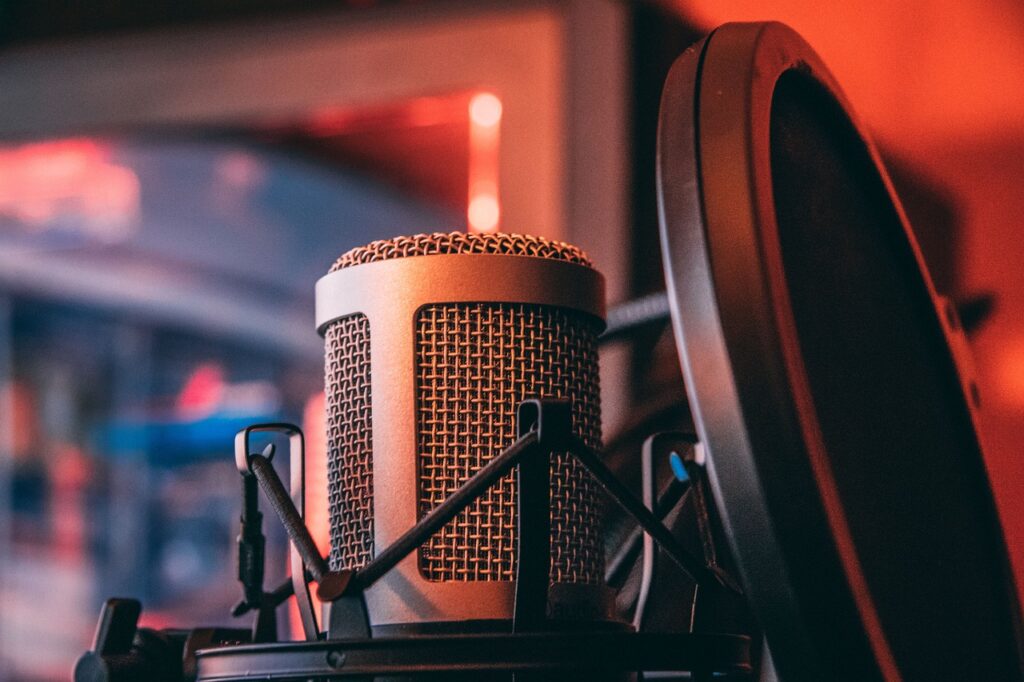Podcast! Get perfect Audio For it
Creating an effectively soundproofed recording space can significantly improve the quality of your audio. Here are some tried-and-tested methods to reduce unwanted noise and control acoustics:

1. Seal Gaps and Cracks
- Sound can seep through even the smallest openings in doors, windows, and walls.
- Solution: Use weather stripping around doors and windows. Apply acoustic caulk to seal gaps around outlets, vents, or between walls.
2. Add Heavy Curtains or Blinds
- Windows are a common source of external noise.
- Solution: Use thick, noise-reducing curtains or blackout blinds to block sounds from outside.
3. Use Acoustic Panels
- Acoustic foam panels help absorb sound and reduce echoes, creating a more controlled environment.
- Solution: Install these on walls, ceilings, and corners of your recording space.
4. Lay Down Rugs or Carpets
- Hard floors can reflect sound, causing echoes.
- Solution: Add rugs or carpets to soften the acoustics and dampen sound.
5. Invest in Soundproofing Blankets
- Thick moving blankets or professional soundproofing blankets can block noise effectively.
- Solution: Hang them on walls or drape them over doors for a budget-friendly sound barrier.
6. Use a Door Sweep
- The gap at the bottom of doors allows noise to leak in.
- Solution: Install a door sweep to seal that gap and block sound transmission.
7. Create a DIY Vocal Booth
- If professional soundproofing isn’t an option, a simple solution is to make a small recording zone.
- Solution: Surround your microphone with foam panels or a portable isolation shield.
8. Add Mass to Walls and Ceilings
- Heavier materials block sound better than lighter ones.
- Solution: Use mass-loaded vinyl (MLV), dense drywall, or even bookshelves filled with books to add density.
9. Isolate Equipment
- Vibrations from your equipment can create low-frequency noise.
- Solution: Place microphones or recording devices on isolation pads or stands to reduce vibrations.
10. Optimize Your Room Layout
- The shape and arrangement of your recording space can affect sound quality.
- Solution: Choose a smaller room with minimal flat surfaces and furnish it with soft items like cushions and sofas to dampen sound.
Bonus Tips
- Use a white noise machine outside the recording space to mask external noise.
- Record during quieter times of the day, especially if you’re in a busy or noisy neighborhood.
Soundproofing your space doesn’t have to be expensive. Even small adjustments can make a big difference. Which of these methods do you think would work best for your setup?
Are you still ignoring the Youtube watch time
Audio Quality is it that important?
I finally found the super key to success













